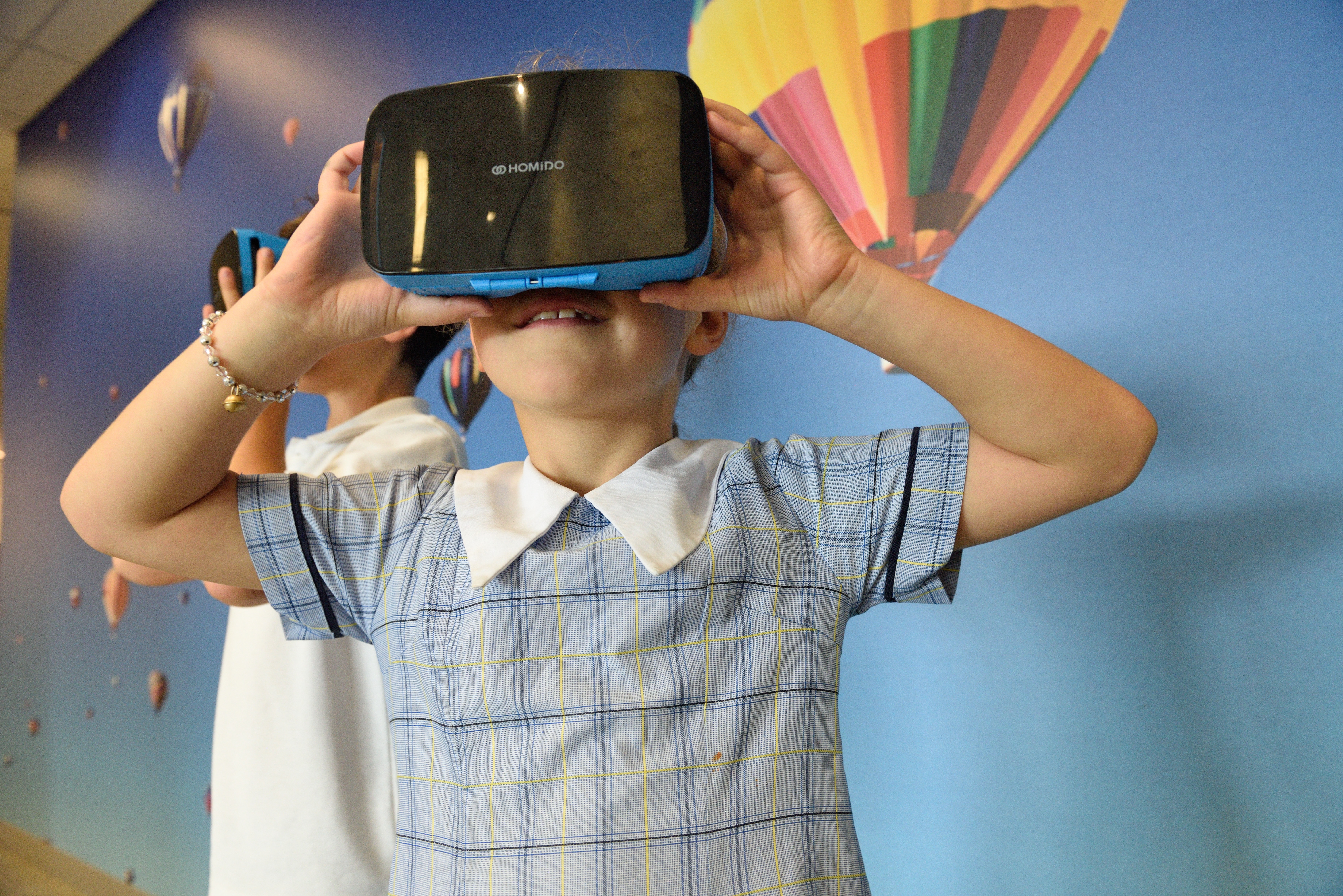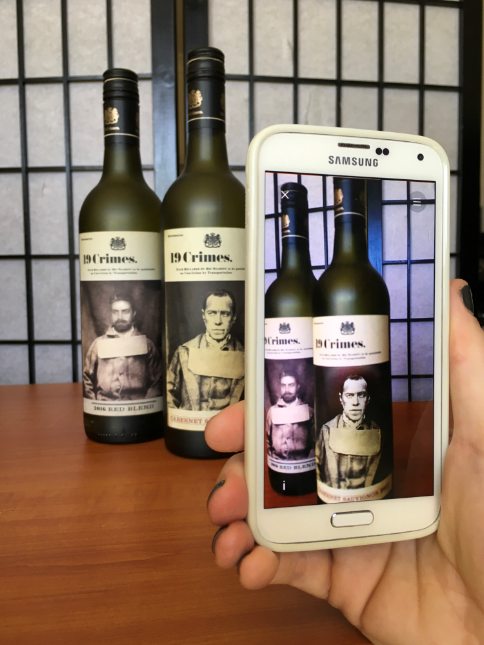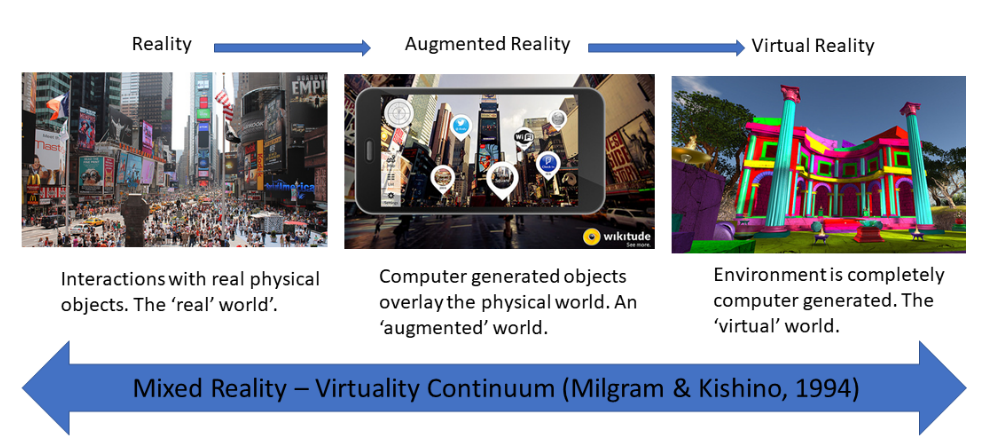Issue 110
Term 3 2019
Even better than the real thing? Virtual and augmented reality in the school library
Queensland University of Technology (QUT) Dr Kay Oddone helps us get to grips with augmented reality and virtual reality in the school library.

Getting to grips with augmented reality and virtual reality
As a child, I spent hours gazing through my stereoscopic View-Master, clicking around the film cartridges that revealed 3D images of nature, superheroes and classic stories. The View-Master allowed me to escape into an imaginative world in a different way to books or television. Holding it up to my eyes, the whole world disappeared as my field of vision was completely taken up by these tiny slides.
Technology now allows for immersive experiences light years beyond the simple View-Master. Oculus Rift and HTC Vive are bringing virtual reality (VR) out of the realm of science fiction and into the hands of everyday people — thanks to the incredibly cheap Google Cardboard VR viewer, which is literally a cardboard viewer into which the mobile device is placed.
The 2017 K–12 Horizon Report suggests that in only two to three years VR will be widely adopted, and the Gartner Hype Cycle methodologies predict VR and its sibling, augmented reality (AR), will become regular productive technologies
in two to five years.
Getting to grips with augmented reality and virtual reality
If you are new to AR and VR, the best place to begin is with a thorough understanding of exactly what these technologies are, how they differ and what tools and applications they require. Then comes the fun part — play!
Augmented reality
AR is when technology creates a ‘layer’ of information over a person’s experience of the world. There are two main types. The first is where a physical object or image triggers an interaction with the camera of a mobile smart device. The second is where the mobile device’s GPS capabilities act as the trigger; the GPS then ‘layers’ digital data over the user’s location.

Living Wine Labels www.livingwinelabels.com
Australian wine brand 19 Crimes has recently used an example of this first type of AR as a marketing tool for the creation of talking wine labels. The label of each wine variety has a photo of a convict. Using a bespoke app, potential purchasers can hold their smart device to the label and see the convict tell their story in a video. This type of AR is the easiest to create in an education setting, using apps like HP Reveal (previously known as Aurasma) or Metaverse. Imagine being able to embed a book trailer video into a book cover?
The second type of AR is perhaps most widely known through its use in the Snapchat and Pokémon GO! apps. With Pokémon GO!, the app identifies where the user is in real time and creates Pokémon animations that can be viewed through the smart device camera. As the user walks around, their location and the time of day or night determines when different Pokémon ‘appear’. This type of AR provides a number of opportunities to engage students.
For example, Plane Finder allows the user to identify what type of planes are flying overhead, their destination and point of origin. Star Chart reveals the identity of and facts about the planets, stars and constellations that the user points their device towards.
Some of the simpler AR apps that overlay without GPS can also be fun and instructive. Money Everywhere captures photos of students with money falling from the sky. These money calculations can be made more engaging by snapping a range of photos, adding the totals and graphing them to see who receives the most virtual cash.
Virtual reality
VR is complete immersion into a computer-generated environment or simulation, made possible through technology such as a helmet or viewer. The most fascinating aspect of VR is its ability to trick the mind into thinking it is actually within a virtual environment. For example, when viewing a VR app that features a rollercoaster ride, users may feel the same dizziness and displacement that they would in reality.
Simple apps on a phone, combined with a Google Cardboard viewer, provide enough immersion to make one feel a little ill, but the lack of audio stimulus and real interactivity limits just how ‘real’ the experience feels. This may be a good thing for younger students.
For older or more experienced users of VR, technologies that provide a much fuller immersion are becoming increasingly available. Here, sensory stimulation including the sense of touch (e.g. wind blowing through your hair as you fly) and audio (e.g. the rushing sound as you soar), as well as the ability to interact with the virtual environment, makes the real world disappear.
The ability to experience ‘being there’ from the safety of a classroom has obvious appeal for the educator. Already, international travel is available through the immersive VR version of Google Earth, and opportunities for interactive excursions such as walking through historical sites or investigating the human body are increasing.

Augmented reality and virtual reality in the library
As a space for innovative and contemporary learning, the library is a fantastic place for AR and VR. There are so many ways these technologies could be used to raise engagement and to promote literature and literacy. As both AR and VR require specific digital tools, keeping these tools in a central location such as the library makes sense.
Augmented reality
While most AR applications focus on providing pre-created animations or information that overlays reality when viewed through a mobile device, the suggestions below allow students to be part of the creation process. The AR technology is changing rapidly. However, two of the most well-established platforms, Metaverse and HP Reveal, contain desktop studio environments where the experiences are created. The experiences themselves are activated via the apps. The following activities can be conducted using these:
- Create an interactive orientation activity
Students must find all trigger images and view overlays in order to answer trivia questions. This idea could be adapted for getting students to navigate different parts of the library, or for introducing specific tools or equipment in a teaching area such as home economics or industrial arts. - Invite students/parents/the community to view an interactive gallery
Students could create videos of themselves talking about their work. Display the pieces of work — which also act as the trigger images — and provide visitors with advice about which app to download to their smart mobile devices. - Encourage parents to interact with library newsletters
Add one or more trigger images to the newsletter that create overlay videos of a recent library event, new resource or positive message. - Guide teachers to embed audio or video explanations onto homework tasks
The inclusion of audiovisual explanations means that students can access 24/7 support. - Have students create a ‘digital story walk’ by embedding a narrative into the library or school environment
As characters move around the library or school telling their story, encourage the viewer to travel with them, adding a chapter to each trigger image.
Virtual reality
For virtual reality within the school library, all that is needed is a mobile device (which runs the VR experience), headphones (to be
truly immersed in the ‘new’ reality) and a VR viewer. The VR viewer can be a high-end model, but terrific experiences can be had
using Google Cardboard. Consider VR as a way to:
- Develop empathy
Global Nomad Group’s Experience of Syria allows students to develop empathy and explore for themselves what life is like for children trapped in a war zone. - Add a further layer to literature
Be inspired by the beautiful War of Words, which features a reading of Siegfried Sassoon’s poem 'The kiss'. This app demonstrates how VR might engage students in poetry and literature through immersing them in an atmosphere that a simple reading may not provide. - Build confidence with public speaking
Apps such as Beyond VR Public Speaking or Virtual Speech can make presentations a less painful experience by offering students the opportunity to practise in front of a virtual audience, in a variety of settings.
AR and VR have the potential to transform learning experiences. As curriculum and digital technology leaders, teacher librarians are well-placed to explore and implement these immersive technologies within the library, the classroom and beyond. To learn more, check out the collection of articles in my Flipboard magazine at http://flip.it/NdZQaU.
Author's note: HP Reveal has announced the closure of the platform. A reminder that this is a changeable space, and we need to embrace a flexible mindset when using these technologies.
Image credits
Main photo by stem.T4L on Unsplash and figure supplied by Kay Oddone.
References
- Freeman A, Adams Becker, S, Cummins, M, Davis, A & Hall Giesinger, C 2017, NMC/CoSN Horizon Report (K–12 ed.), The New Media Consortium, Austin, Texas, www.nmc.org/publication/nmccosn-horizon-report-2017-k-12-edition
- Milgram, P & Kishino, F 1994, ‘A Taxonomy of Mixed Reality Visual Displays’, IEICE Transactions on Information and Systems: Special Issue on Networked Reality, no. 12, https://www.researchgate.net/publication/231514051_A_Taxonomy_of_Mixed_Reality_Visual_Displays
- Panetta, K 2017, ‘Top Trends in the Gartner Hype Cycle for Emerging Technologies’, www.gartner.com/smarterwithgartner/top-trends-in-the-gartner-hype-cycle-for-emerging-technologies-2017
An earlier version of this article was first published in IC3: Professional Journal of the WA School Library Association.
